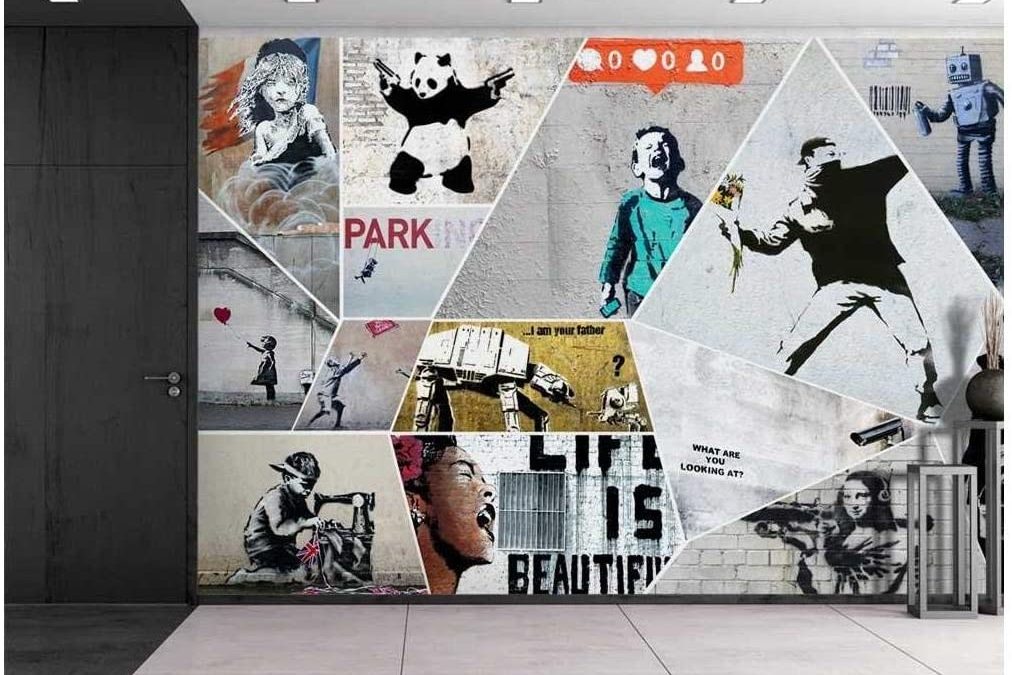Although it has many nicknames around the world, street art in America is commonly known as “graffiti”. If you haven’t already noticed from surveying your surrounding environment, graffiti can be found anywhere! In the last decade, street art has gained massive amounts of popularity and appreciation from the general public. Street art has become so popular that artists are now commonly commissioned to create their own designs on private buildings. It’s safe to say that society has come a long way from treating all graffiti artists like criminals. Let’s take a look at some graffiti wall mural facts you need to know!
Can Control
Graffiti is commonly created with the aid of a spray can of paint. Spray paint is a tool that has evolved significantly over time. The heads of cans used to allow for a very limited amount of paint release when pressed. Now, spray paint comes in a variety of different cans that allow the individual to customize how much paint they want to use. A key to being a great graffiti artist is mastering something called “can control”. Can control is the ability to use a can properly in order to manipulate it to do exactly what you’d like. For example, we can take typography into account. When painting words and letters, it’s necessary to be able to control how wide or how thin you’d like each letter to be. Look below for more graffiti wall mural facts.
Politics
Did you know that graffiti isn’t always created for an artist’s personal enjoyment? In fact, many art movements throughout world history have been partly created due to political turmoil or unrest. Artists from all time periods have often gathered to create and present art so that they can make a difference in the world. Graffiti, much like other forms of art, can be created to send a message! A great thing about graffiti is that, unlike art made on a canvas, it can be publicly displayed for a long portion of time. Being publicly displayed essentially forces people to view your work; graffiti is special because of its confrontational nature! People are forced to, at the very least, think about whatever message an artist is trying to portray. Read below for more graffiti wall mural facts.
Tagging
Have you ever heard of the term “tagging”? Tagging is the act of drawing a “tag” on public property. A tag is essentially an artistic version of a person’s signature. Tags, much like online usernames on social media sites or forums, are identifiers for artists. For instance, an artist may create multiple pieces throughout a city. If an artist wants to indicate that they are the one who illustrated a piece, they’ll often leave their tag on the art or near it. Many artists don’t take choosing a tag lightly. Artists try to avoid choosing similar tags of other local graffiti purveyors. Partly because they don’t want to be seen as copycats, but also because they don’t want their own artwork attributed to someone else. Read below for more graffiti wall art mural facts.
Culture

As previously stated, graffiti is like other forms of art in that it is closely linked to politics. Graffiti, just like other art, is also linked to the creation of subcultures! Did you know that modern graffiti culture started in the 1960s? In Philadelphia, a graffiti writer started to tag highways in the surrounding area that read “Bobby Beck in ’59”. Soon thereafter, an artist in New York called “Cornbread” started to tag “Cornbread Loves Cynthia” around his school and neighborhood. Slowly, graffiti became a cultural movement throughout the 60s, 70s, and 80s. Graffiti culture hit its peak with the emergence of 1980s hip-hop culture in New York. Many music groups would tag their group names in their local environments and on subway cars. Read below for more wall mural wall art facts.
Stick

A big difference between graffiti and traditional art is that graffiti is both created and displayed outside. Traditional art is contained onto some type of canvas and can be kept in a controlled environment. Graffiti artists have no control over what happens to their work! Their pieces are exposed to both weather and people which both have the potential to be ruinous! In order for their art to stand the test of time, artists place something called wheat paste onto their graffiti once complete. Wheat paste is an adhesive made out of flour, water and glue. This paste essentially seals graffiti to a wall for about six months. Did you enjoy these graffiti wall mural facts?
Conclusion
Although the general public’s opinions on graffiti are lightening with the advent of a more accepting and inclusive world, individual opinions still run the gamut. Many people believe graffiti to be a blight on a town or city, and would prefer to see it taken down as quickly as possible. After learning more about the craft and history of graffiti, how do you feel? Should graffiti be accepted by more people? Maybe you think all graffiti should be taken down? Perhaps you believe there should be some sort of balance? Whatever you think, we hope that you enjoyed learning more about graffiti with these graffiti wall mural facts!



